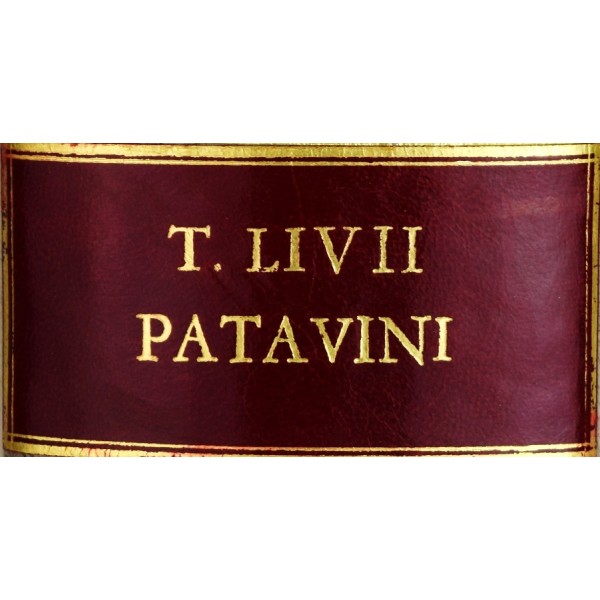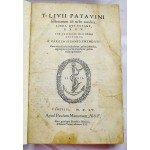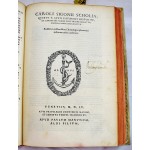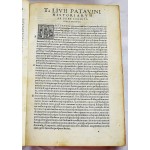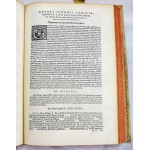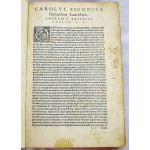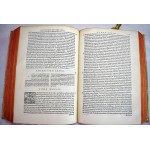T. Livii Patavini Historiarum Ab Urbe Condita Libri Qui Extant XXXV : Cum Universae Historiae Epitomis
T. Livii Patavini Historiarum Ab Urbe Condita Libri Qui Extant XXXV : Cum Universae Historiae Epitomis
Livy.; Carlo Sigonio; Livius, Titus
Venetiis : Apud Paulum Manutium, Aldi F, 1555
Folio. [2], 478, 98, [40] [1] leaves ; 35 cm. First edition of the Sigonio editions. Bound in gilt-stamped modern vellum. Page ends washed red. Red leather spine label. Fine binding and cover. Early 20th-century repair to title page. Slight soiling to title page. Small dampstain at bottom margin near page end from title page to A1. Sporadic contemporary notation in text margins, with majority of notation occurring in the Scholia. Small tan stain to p. 216-18. Small tan stain at bottom margin though most of index. Contemporary owners name circa 18th century on bottom margin of p310. Pages generally clean and white. Chronological table of Roman kings and consuls and index at end of scholia. Additional 5 pages on late 18th century paper, in handwritten Latin, continuing the chronological table from 9 B.C to 537 A.D., giving the authors information was collated from at the bottom of final page. This is an oversized or heavy book that requires additional postage for international delivery outside of Canada and the US. Adams L1344; Renouard 202.19; Dibdin II, p 166.; BM STC It. p.390. Brunet III 1106; L1518 <br><br> John L. Balderston was an American playwright and screenwriter best known for his horror and fantasy scripts.
Sigonius' edition is the first in which scholarly criticism was applied to the chronology of Roman history and was widely applauded as the best and magnificent edition of Livy extant. Sigonius (1524-1584) was professor of literature at Venice and produced a number of works for the Aldine press - he was then the most significant classical scholar in Italy and probably rivaled only by Scaliger elsewhere. Reprinted several times in subsequent years by the Aldine press, early bibliographers agreed the 1555 edition was the best printed and with the best quality of paper used. Sigonius was the first editor of Livy and also of Classical works, to use accurate criticism and apply to the chronology of Roman history' (Sandys). Rather than merely emend the text here and there based on linguistic grounds, Sigonius sought to achieve an understanding of the historical content, which enabled correction of the text and commentary; in this he marks an important early step in the development of the science of chronology, and scholarship of Classical authors, which Scaliger would push forward later in the century.
